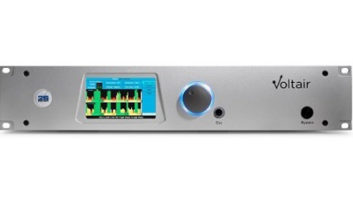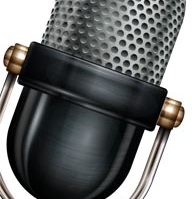
There was a lot of talk at the recent NAB Show about the interplay between 25-Seven System’s Voltair and Nielsen’s PPM listener monitoring system. PPM inserts an electronic “watermark” into radio broadcasts that are then measured by the PPM monitors. Here are some handy Radio World background stories: “Voltair Creates Drama” and “Buzz Erupts Over Voltair.”
TechBytes reached out to Geoff Steadman, vice president, founder of 25-Seven Systems, for his thoughts.
TechBytes: What problem is Voltair addressing?
Geoff Steadman: When the radio ratings system went from paper diaries to electronic measurement, one approach was supplanted by another. The new process turned a single channel system carrying content for human ears, into a dual channel system broadcasting to both humans and “meters.” We may know nothing about “household ethnographics,” but in the world of audio and signal processing that watermarking rides on, we are the experts. Any signal utilizing this channel is subject to the physics of audio, and this world continues to change and evolve. The current watermarking system was designed in the 1990s, put in the market a decade ago, and hasn’t changed since. Questioning assumptions is always important, it is what leads to innovation.
TechBytes: What was the idea behind the Voltair?
Steadman: There have been questions surrounding watermarking since day one. Voltair exists because broadcasters wanted tools to understand and optimize a system they depend on but had no visibility into. Engineers and managers came to us seeking answers because they felt their concerns weren’t getting addressed. Many had simply stopped asking critical questions, and are now surprised to find that not only did 25-Seven and The Telos Alliance not forget how important those questions were, we turned research into a product, and we didn’t talk about it until we had a hardened solution in production. While Voltair is new to many, we have been working on it for years.
TechBytes: What is it that Voltair is doing?
Steadman: Voltair monitors the quality of watermark code generation and provides a score of how well audio is encoding on one and 15 minute periods. It tells you how things are working in real time as opposed to a red light that might go off three minutes after encoding has ceased. Voltair can allow stations to simulate listening environments to get a sense of how their audio programming decodes for a hypothetical listener, and our enhancement processing allows you to change the ratio of the time-frequency spectra between the masking source audio and the watermarked audio.
TechBytes: Why is this important? Does it affect Joe Radio?
Steadman: Voltair is immensely important, because in the ratings world, every meter counts, and in the world of media consumption, the radio industry needs every tool it can to get its slice of the advertising pie.
TechBytes: In your mind, is the Voltair succeeding?
Steadman: It has been hugely successful for us as a product, but insofar as opening the windows and lettering the sun in is good for our industry, Voltair is an even greater success. We have a deep bench of scientists and engineers, and innovation and continuous improvement is what we do. Rest assured that Voltair’s success will be seed corn for further innovation, just as Telos’ invention of AoIP was the seed corn for Voltair. We are actively working on other concepts, processes and add-ons that Voltair has unearthed.










